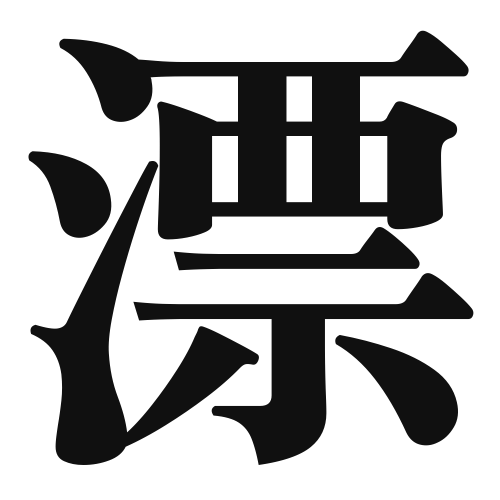1. Overview of Meaning
The kanji “漂” (pronounced “hyou” in Japanese) means “to drift” or “to float.” It conveys the idea of something moving lightly and aimlessly, often in water or air.
2. Formation and Radical
Formation of the Kanji: The kanji “漂” is a phonetic-ideographic character (形声文字). It combines the radical for water (氵) with the phonetic component “票” (which suggests the sound).
Radical: The radical of “漂” is 氵, which is related to water, indicating that the meaning is connected to fluidity and movement.
3. Examples of Usage
Common Words and Phrases:
- 漂流 (hyouryuu) – drifting, floating
- 漂う (tadayou) – to float, to drift
Example Sentences in Daily Conversation:
- 「彼は川を漂っている。」(Kare wa kawa o tadayotte iru.) – “He is drifting on the river.”
- 「風に漂う花びらが美しい。」(Kaze ni tadayou hanabira ga utsukushii.) – “The petals drifting in the wind are beautiful.”
4. Synonyms and Antonyms
Similar Kanji:
- 浮 (bu) – to float; while “漂” implies a more aimless drifting, “浮” can suggest a more stable floating.
Antonyms:
- 沈 (chin) – to sink; this is the opposite of floating or drifting.
5. Cultural and Historical Background
Relation to Japanese Culture: The concept of drifting is often associated with the transient nature of life, a theme prevalent in Japanese literature and art.
Proverbs and Idioms:
- 「漂うように生きる」(Tadayou you ni ikiru) – “To live like drifting,” which suggests a carefree and unanchored lifestyle.
